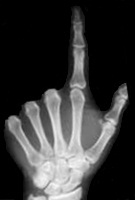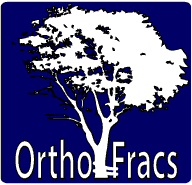Journal Club
February 2010
Cartilage Lesions and the Development of Osteoarthritis After Internal
Fixation of Ankle Fractures: A Prospective Study
Sjoerd A. Stufkens, Markus Knupp, Monika Horisberger, Christoph Lampert and Beat Hintermann
J Bone Joint Surg Am. 2010;92:279-286.
Reviewed by
Dr David Shepherd
MBBS | Accredited Orthopaedic Registrar
Study Type
- Prospective cohort observational study
- Level II evidence
Location
- Liestal, and Kantonsspital, St. Gallen, Switzerland
Funding
- AO grant and SUVA grant
- Swiss accident insurance fund
Aim
- Examine correlation between cartilage damage at arthroscopy after a displaced ankle fracture and the clinical and radiographic long-term.
Hypothesis
- That the more extensive the initial cartilage damage, the higher the chance of osteoarthritis developing later
Inclusion/exclusion criteria
- Inclusion
- ORIF of ankle fracture
- Had an ankle arthroscopy after surgery
- Available for follow –up
- Exclusion
- Systemic inflammatory disease
- Previous ankle injury
- Suboptimal fixation
- Lateral displacement/fibula shortening
Outcome Parameters
- Clinical results
- American foot and ankle society hindfoot score
- AP and Lateral X rays
- Kannus arthritis score
- Based on; Sclerosis/osteophytes/calcification of ligaments/ joint space narrowing/cysts
Method
- Arthroscopy prior to ORIF ankle
- Grading of defect to type and location
- Follow up with X- rays and clinical asssesment by independent clinician
- Mean follow up 12.9 years (11.3 – 14.8)
Site of lesion
- ten possible locations of the cartilage lesions
- medial malleolus
- lateral malleolus
- anterior, medial, lateral, and posterior aspects of the tibia
- anterior, medial, lateral, and posterior aspects of the talus
Statiscal analysis
- Divided into 2 groups
- No lesion
- Lesion
- < 50% depth
- >50% depth
- Kannus arthritis score set to <90 points = joint degeneration
- AOFAS score set to <90 points = less than optimal outcome
- Multiple regression analysis
- Odds ratios with 95% confidence intervals of OA occuring versus not.
Age, sex, BMI included in analysi
Results
- 81% have some form of cartilage lesion
- 65% talus have lesion
- 50% lesion on tibia
- 39% lesion in fibula
- 21% all three surfaces
- 19% no cartilage damage
Incidence of OA
- Osteoarthritis Kappan < 90
- 43%
- Clinical signs of osteoarthritis, AOFAS < 90
- 39%
Results statistics
- If cartilage damage present
- Suboptimal Clinical odds 5:1
- Xray changes odds 3.5:1
- Sites:
- Tibia – 2.7
- Talus – 3.7
- Fibula – no increase
- Depth >50%
- Anterior talus - 12.3
- Lateral talus - 5.4
- Medial M . – 5.2
- Post plafond – 4.7
Conclusions
- Initial cartilage damage after an ankle fracture is an independent predictor of posttraumatic osteoarthritis.
- Lesions on the talus and tibia are associated with negative long-term results, whereas lesions on the fibula do not correlate with a worse long-term outcome.
- Specifically, deep lesions on the anterior and lateral aspects of the talus and on the medial malleolus correlated with an unfavorable clinical outcome.
Pros.
- Defining a clinical natural history which has previously not been well documented
- Prospective cohort study with reasonable follow up period
- Clear outcome variables with blinded clinicians
Cons.
- State that cartilage damage is an independent predictor
- Do not correlate a no lesion group with development of OA
- No specification of ankle fracture grade and the location – grade of lesions or correlation of arthritic changes
- Poor follow up
- Stated no patient did not return due to a poor outcome
- 109 out of 288
- No specification of type of fixation / diastasis screw which may affect outcome
- No arthroscopy, MRI at follow up
Applicability
- Guide to advise patients of risk of developing OA
- May allow lifestyle modifications
- Who to follow up more regularly
Take home message
- Chondral defects are associated with ankle fractures, particularly those with the mechanism that is likely to create a defect on the medial malleous or antero-lateral talus.
- These are associated with the development of osteoarthritis and this study defines the natural history and likelihood of this occurrence.
Webpage Last Modified:
5 August, 2010



